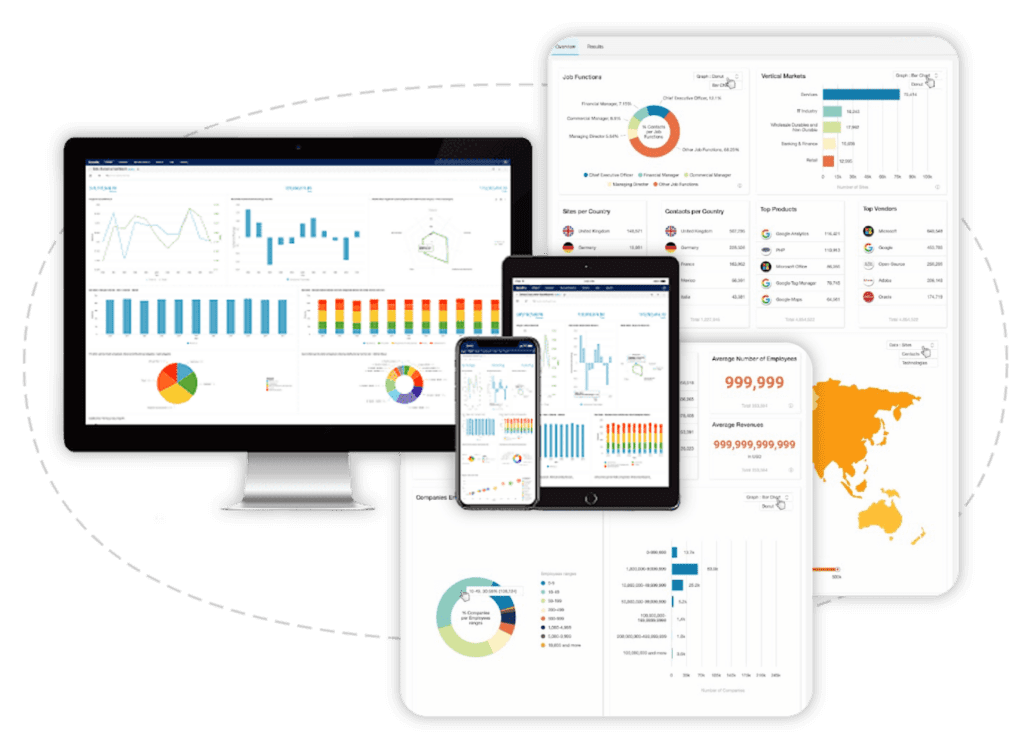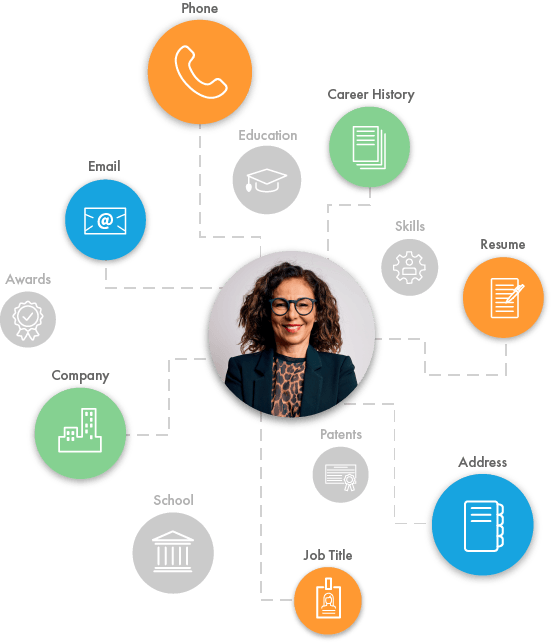
Competition for talent is fierce and companies are discovering the need to adapt to worldwide changes through effective talent management. Read on to learn about the relevance of workforce planning today and cutting-edge B2B data and tools for efficient and data-driven workforce planning.
The Importance of Workforce Planning in Today’s Business Landscape
According to the World Economic Forum, more than 1 billion people by 2030 will need reskilling to keep up with technology’s rapid transformation. Furthermore, 29% of recruiters also believe the skills gap has increased. This number is evident in companies focusing on skills-based hiring over the requirements of having a Bachelor’s degree.
The working population aged 50 and above has increased by 37% in 2020, causing more multigenerational workplaces. In light of this, workforce planning is more vital now than ever. It anticipates coming trends and changes that will inevitably affect the organization. It plans ahead of the business landscape and market changes through hiring strategies, talent acquisition, and more.
To do an efficient workforce planning, organizations will have to address few areas like:
- Understand the critical components of a strategic workforce plan
- Leveraging data and analytics and choose the right provider
- The tools and software required to implement the strategy
Critical Components of a Strategic Workforce Plan
Some critical components of a strategic workforce plan are:
- A talent and acquisition and retention strategy
- A succession planning ensuring a smooth transition of talents
- A mitigating risk strategy addressing workforce challenges
Talent and retention strategy
A strategic workforce plan aligns an organization’s workforce with its strategic goals and objectives. To do so, it must develop a talent acquisition and retention strategy. Critical components of that strategy can include:
- Workforce Analysis
This key involves assessing the current workforce. The process takes inventory of the skills, competencies, demographics, and performance. It helps identify strengths and weaknesses within the workforce. The accumulated data provides insights into the organization’s current capabilities. - Data and Analytics
Effective strategic workforce planning relies on accurate and up-to-date data. Therefore, organizations should establish systems for collecting, analyzing, and utilizing workforce data. By doing so, organizations can use said data for decision-making, tracking progress, and making necessary adjustments. - Future Workforce Needs
The workforce plan should anticipate future requirements based on the organization’s strategic goals. This process involves using the data collected in the first step to identify the skills, knowledge, and competencies needed to support the organization’s future objectives.
- Gap Analysis
A gap analysis can identify discrepancies or shortages in skills or talent by comparing the current workforce with future needs. This analysis helps prioritize areas that require attention. It guides strategy development to address those gaps.
- Recruitment and Talent Acquisition
A strategic plan includes strategies for attracting, recruiting, and selecting qualified candidates. It involves developing targeted recruitment campaigns or exploring diverse talent pools. The HR development may also leverage technology to reach the talent pool. They may also partner with educational institutions.
- Training and Development
Investing in training and development programs is crucial for building a skilled and adaptable workforce. It also encourages talent retention. Therefore, a strategic plan should outline initiatives for enhancing the critical skills of existing employees. This stage involves providing relevant workforce development and training programs -including mentoring and coaching.
- Succession Planning
Succession planning involves identifying critical positions within the organization. Then it transitions to strategy development to ensure a smooth transition when those positions become vacant. It may include leadership development programs, talent pipelines, and knowledge transfer mechanisms.
- Retention and Engagement
Retaining top talent is essential for organizational success. A workforce plan should include strategies to enhance employee engagement. The program must promote a positive work culture and manage conflicts appropriately. This step can involve interactive employee diversity, equity, and inclusion training. Retention and engagement must also tackle competitive compensation and benefits to create career growth and advancement opportunities.
Leveraging Data and Analytics for Successful Workforce Planning

Just like how we use evidence-based research to make decisions, we need to utilize data and analytics for effective workforce planning. Data and analytics can help identify skill gaps and workforce needs. The data can also show us workforce patterns and forecast trends. Predictive modeling and forecasting techniques can further benefit workforce planning by drawing out the trends inside the organization (such as performance levels and churn rate) and planning for them. By using data-driven decision-making, we can create and achieve strategic workforce goals.
Give insights with workforce analytics and data visualization
Tools and Software for Efficient Workforce Planning
With the rise of technology today, take advantage of the tools and software used for efficient workforce planning. As an example, organizations can use applicant tracking systems (ATS) and recruitment software to automate the stages of the hiring process. These tools are useful for:
- Optimize budget allocation and cost management with software solutions
- Streamline HR processes through automation
- Enhance talent acquisition and recruitment strategies

Streamlining Talent Acquisition and Recruitment Through Automation
Applicant Tracking Systems (ATS) are software tools designed to streamline talent acquisition and automate various aspects of the recruitment process. Here are some ways in which ATS can help streamline talent acquisition and recruitment:
1) Resume Parsing: ATS can automatically extract relevant information from resumes and store it in a structured format. This eliminates the need for manual data entry and allows recruiters to quickly search and filter through a large volume of resumes based on specific criteria.
2) Job Posting and Distribution: ATS can post job openings to various job boards, career websites, and social media platforms with a single click. This saves time and ensures that job postings reach a wider audience, increasing the chances of attracting qualified candidates.
3) Candidate Screening: ATS can automatically screen candidates based on predefined criteria, such as skills, qualifications, and experience. Recruiters can set up specific screening questions or use AI-powered algorithms to rank candidates based on their fit for the job. This helps in shortlisting candidates efficiently.
4) Interview Scheduling: ATS often provides tools for interview scheduling, allowing recruiters to send automated interview invitations and manage interview calendars. Candidates can select their preferred time slots from a predefined list, eliminating the need for back-and-forth communication and saving time for both recruiters and candidates.
5) Collaboration and Communication: ATS platforms typically offer collaborative features that enable recruiters and hiring managers to share feedback, exchange candidate evaluations, and communicate within the system. This streamlines the decision-making process and keeps all relevant stakeholders informed and aligned.
6) Candidate Relationship Management (CRM): ATS can serve as a centralized database for managing candidate relationships. Recruiters can track candidate interactions, store notes, and set reminders for follow-ups. This helps in building a talent pipeline and nurturing relationships with potential candidates for future job openings.
7) Reporting and Analytics: ATS generates reports and provides analytics on various recruitment metrics, such as time-to-fill, source of hire, and candidate demographics. This data allows recruiters to evaluate the effectiveness of their recruitment strategies, make data-driven decisions, and optimize the hiring process.
By automating these tasks and centralizing recruitment activities, ATS can significantly streamline talent acquisition, improve efficiency, reduce administrative burden, and enhance the overall candidate experience.
Want to know how our other tools can help you?
Conclusion
For an efficient workforce planning, organization need to take into account many components. They need to understand and manage critical components of workforce planning like developing a good talent and acquisition and retention strategy, develop a succession planning ensuring a smooth transition of talent and ensuring a mitigating risk strategy addressing workforce challenges. Moreover, organizations should base their decisions on accurate, up do data and reliable B2B professional profiles data like the one provided by Neuron360-Profiles™, powered by Rhetorik. Finally, organizations can take advantage of the tools and software used for efficient workforce planning like applicant tracking systems (ATS) and recruitment software to automate the stages of the hiring process.